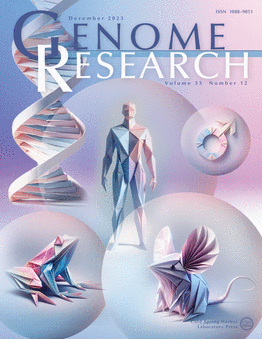STCC通过空间转录组学数据的一致聚类增强了空间域检测
IF 6.2
2区 生物学
Q1 BIOCHEMISTRY & MOLECULAR BIOLOGY
引用次数: 0
摘要
空间解析转录组学技术的快速发展已经产生了大量的空间转录组学数据。从这些数据中获得生物学见解提出了重要的计算和分析挑战,其中最基本的步骤是空间域检测(或空间聚类)。虽然近年来已经提出了许多用于空间域检测的工具,但它们的性能因数据集和实验平台而异。因此,充分利用不同的工具,通过共识策略获得更准确、更稳定的结果是一项重要的任务。在这项工作中,我们开发了STCC,这是一种用于空间转录组学数据的新型共识聚类框架,它使用各种共识策略(包括基于onehot的、基于平均的、基于超图的和基于wnmf的方法)汇总了最先进工具的结果。对不同实验平台的模拟和真实数据的综合评估表明,在不同的输入参数下,共识聚类显著提高了单个方法的聚类精度。对于具有清晰分层结构的正常组织样本,通过整合多个基线方法的共识聚类可以改善结果。相反,当分析显示分散的细胞类型分布模式的肿瘤样本时,单一基线方法的集成产生令人满意的性能。对于共识策略,基于平均和基于超图的方法显示出最佳的精度和稳定性。总的来说,STCC为空间转录组学数据的空间域检测提供了一个可扩展和实用的解决方案,为未来空间转录组学的研究和应用奠定了坚实的基础。本文章由计算机程序翻译,如有差异,请以英文原文为准。
STCC enhances spatial domain detection through consensus clustering of spatial transcriptomics data
The rapid advance of spatially resolved transcriptomics technologies has yielded substantial spatial transcriptomics data. Deriving biological insights from these data poses nontrivial computational and analysis challenges, of which the most fundamental step is spatial domain detection (or spatial clustering). Although a number of tools for spatial domain detection have been proposed in recent years, their performance varies across data sets and experimental platforms. It is thus an important task to take full advantage of different tools to get a more accurate and stable result through consensus strategy. In this work, we developed STCC, a novel consensus clustering framework for spatial transcriptomics data that aggregates outcomes from state-of-the-art tools using a variety of consensus strategies, including Onehot-based, average-based, hypergraph-based, and wNMF-based methods. Comprehensive assessments on simulated and real data from distinct experimental platforms show that consensus clustering significantly improves clustering accuracy over individual methods under varied input parameters. For normal tissue samples exhibiting clear layered structure, consensus clustering by integrating multiple baseline methods leads to improved results. Conversely, when analyzing tumor samples that display scattered cell type distribution patterns, integration of a single baseline method yields satisfactory performance. For consensus strategies, average-based and hypergraph-based approaches demonstrate optimal precision and stability. Overall, STCC provides a scalable and practical solution for spatial domain detection in spatial transcriptomics data, laying a solid foundation for future research and applications in spatial transcriptomics.
求助全文
通过发布文献求助,成功后即可免费获取论文全文。
去求助
来源期刊

Genome research
生物-生化与分子生物学
CiteScore
12.40
自引率
1.40%
发文量
140
审稿时长
6 months
期刊介绍:
Launched in 1995, Genome Research is an international, continuously published, peer-reviewed journal that focuses on research that provides novel insights into the genome biology of all organisms, including advances in genomic medicine.
Among the topics considered by the journal are genome structure and function, comparative genomics, molecular evolution, genome-scale quantitative and population genetics, proteomics, epigenomics, and systems biology. The journal also features exciting gene discoveries and reports of cutting-edge computational biology and high-throughput methodologies.
New data in these areas are published as research papers, or methods and resource reports that provide novel information on technologies or tools that will be of interest to a broad readership. Complete data sets are presented electronically on the journal''s web site where appropriate. The journal also provides Reviews, Perspectives, and Insight/Outlook articles, which present commentary on the latest advances published both here and elsewhere, placing such progress in its broader biological context.
 求助内容:
求助内容: 应助结果提醒方式:
应助结果提醒方式:


